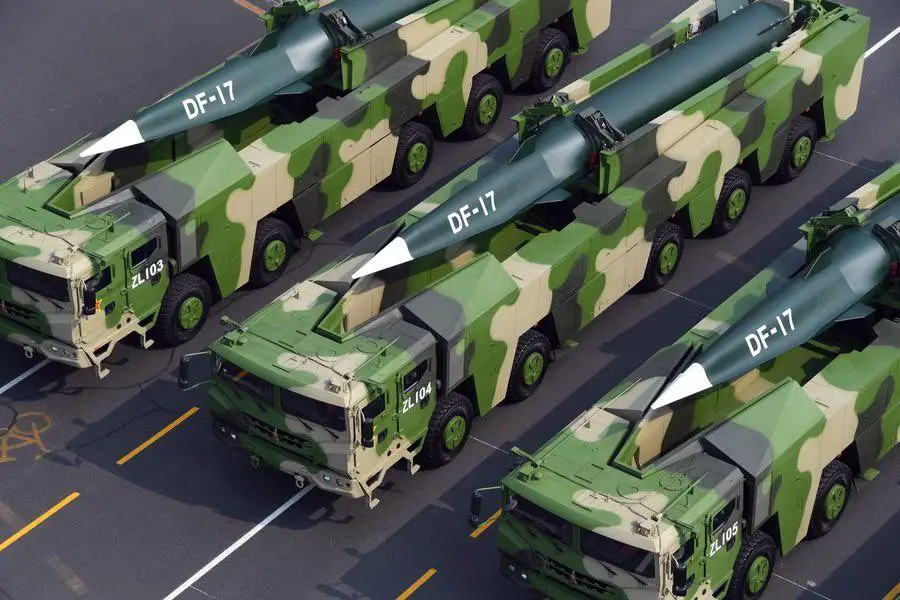A recent report from the Middlebury Institute of International Studies has revealed that the People’s Liberation Army Rocket Force (PLARF) is deploying sophisticated medium-range Dongfeng 17 (DF-17) hypersonic missiles in southeastern China. These missiles have the potential to target Taiwan and possess the capability to evade U.S.-built air defense systems. The report, titled “People’s Liberation Army Rocket Force Order of Battle 2023,” was published by researcher Decker Eveleth on July 3, as reported by the South China Morning Post on July 23. According to the findings, the PLARF has upgraded its short-range missiles in China’s southeastern provinces with the advanced medium-range DF-17 missiles.
Kapil Kajal, a land warfare reporter at defense intelligence firm Janes Asia-Pacific, highlighted the significance of the missile deployment at Base 61 in Yong’an, Fujian Province. He stated that this move indicates the PLA’s intent to gain the capability to strike foreign military bases and fleets in the Western Pacific. U.S. intelligence indicates that when mounted on a hypersonic glide vehicle (HGV), these missiles have a range of 1,800 to 2,500 km and can achieve speeds between Mach 5 and Mach 10, making them extremely difficult to detect by U.S. missile defense systems like THAAD, SM-3, and Patriot.
Although the DF-17s have replaced some short-range missiles, there are still nearly a thousand short-range missiles pointed at Taiwan. Kajal warned that these missiles could reach Taiwan within 6 to 8 minutes, with the combined deployment of short- and medium-range ballistic missiles in southern and southwestern China potentially forming the first wave of attacks on Taiwan. The PLARF, established as a full-service branch in 2016, has been actively involved in China’s live-fire drills and simulated attacks against Taiwan in August 2022 and April 2023, respectively. Notably, the DF-17, along with the DF-ZF hypersonic glide vehicle, was officially unveiled during the National Day military parade on October 1, 2019, marking China’s first operational hypersonic weapon system.
The DF-17 utilizes the rocket booster from the DF-16B short-range ballistic missile, making its design relatively unchanged. However, the key distinction lies in its hypersonic glide vehicle technology, enabling it to follow a suppressed, lower altitude trajectory and accelerate to Mach 5. This unique flight path makes it challenging for conventional anti-ballistic missile (ABM) defenses to intercept the glide vehicle, as it becomes highly maneuverable and extends its range, allowing it to strike regional targets effectively. In conclusion, China’s deployment of advanced DF-17 hypersonic missiles raises concerns about potential targeting of Taiwan and the ability to circumvent U.S. missile defense systems. The development and deployment of such advanced weaponry signal a significant advancement in China’s military capabilities and may have implications for regional security dynamics in the Western Pacific.












